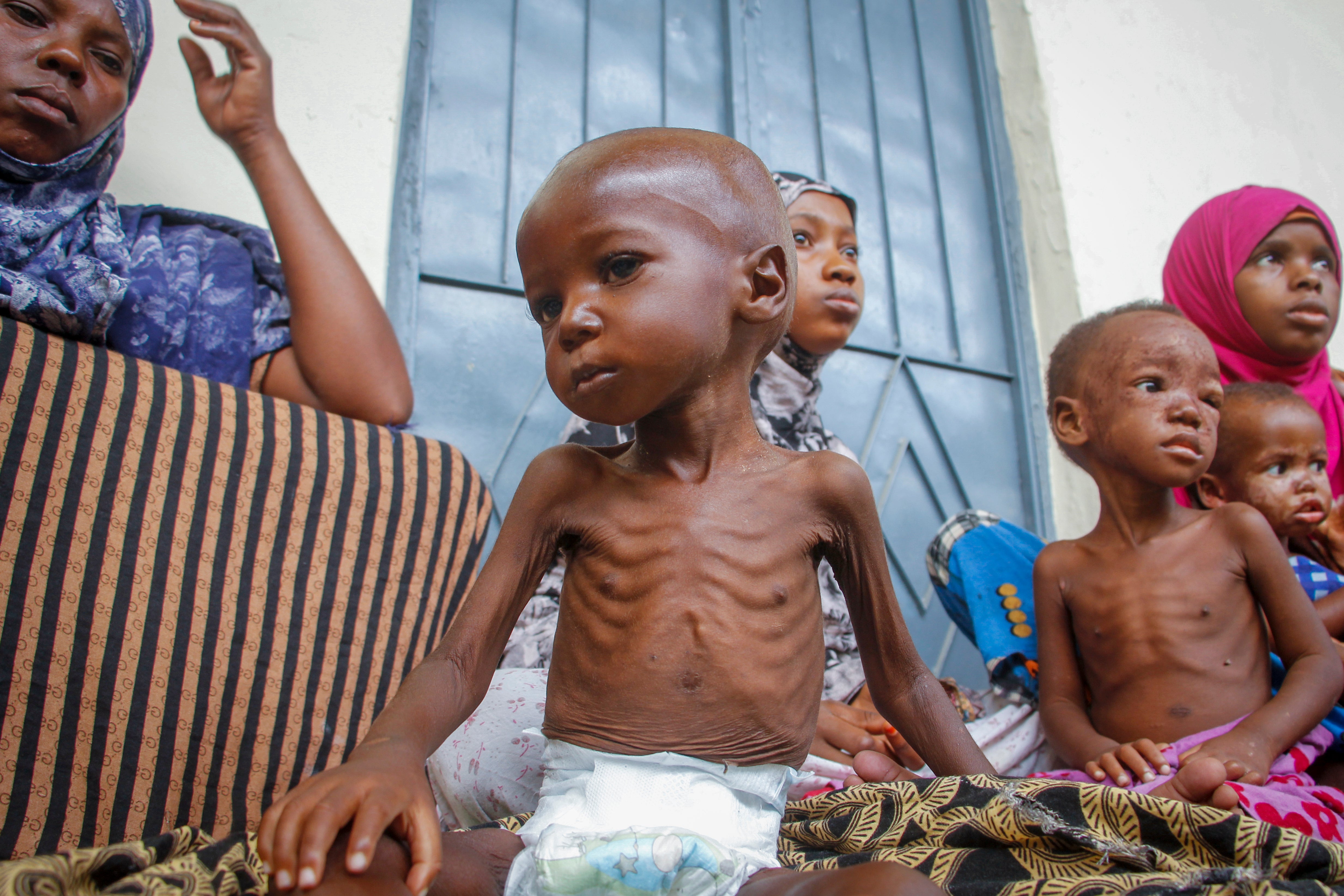Drought in Horn of Africa ‘100 times more likely’ due to climate crisis
More than 36 million people are starving following two years of drought


Drought in the Horn of Africa is now around 100 times more likely to happen due to the human-caused climate crisis, according to a study published on Thursday.
The region, comprising Somalia, Ethiopia and Kenya, is facing its most severe drought in four decades.
More than 43,000 people died in Somalia alone last year due to the conditions, with half of the deaths in children under five. Some 36.4 million people are currently at risk of starvation.
The rainy season, critical for survival in these largely agricultural and pastoral communities, has failed for the past five years.
Cheikh Kane from the charity, Red Cross Red Crescent Climate Centre, described it as “a humanitarian disaster”.
The study, from the international research group World Weather Attribution (WWA), found that climate change has made dry soils much more likely in the Horn of Africa, leading to drought.
And the drought would not have been so severe without the impacts of greenhouse gas emissions, said WWA, a collective of scientists who assess the role of climate behind extreme events.
Without climate impacts, conditions in the region would be “abnormally dry”, the study found.

Rising global heat is driving agricultural drought in the Horn of Africa. The hotter conditions evaporate moisture from the soil, decimating crops and pastures in a region where over half of the population is directly or indirectly dependent on agriculture and livestock for a living.
While the climate crisis has made drought more frequent and extreme, it is layered on top of other vulnerabilities – such as conflict in the region, political instability, and poverty.
“The findings of this study show that frequent multi-years droughts compounded with heat extremes, in the main rainy season, will severely impact food security and human health in the Horn of Africa as the climate continues to warm,” said Joyce Kimutai, principal meteorologist and climate scientist at the Kenyan government’s meteorological department.

The research was conducted by analysing weather data and models to understand the impact on droughts if the world hadn’t warmed by 1.2 degrees Celsius in the past 150 years.
Researchers discovered that the region’s rainy season, between March and May, is about twice as likely to have less rainfall due to climate change.
On the other hand, October to December is now experiencing more rain disrupting the agricultural pattern of the region.
This study shows very strongly that drought is much more than just the lack of rain, and that the impacts of climate change strongly depend on how vulnerable we are
The WWA team says that the Horn of Africa needs to be made more resilient to future severe droughts by using both new technology and traditional knowledge.
“This study shows very strongly that drought is much more than just the lack of rain and that the impacts of climate change strongly depend on how vulnerable we are,” said Friederike Otto, senior lecturer in climate science at Imperial College London.
“And one of the main findings from the recently published IPCC synthesis report is that we are way more vulnerable than we thought.”
Join our commenting forum
Join thought-provoking conversations, follow other Independent readers and see their replies
Comments


Bookmark popover
Removed from bookmarks